Whether you’re trying to survive a SHTF scenario or you just need a refreshing drink, access to safe, clean tap water is essential. Yet for many people, water right out of the faucet already poses risks that can impact your water storage strategy.
Aging pipes, chemical runoff, or naturally occurring contaminants have left some states’ tap water far worse than others. In some cases, it might not even be advisable to store the local tap water without filtering or purifying it.
So, I thought we should take a look at the top 10 U.S. states with the worst tap water, and what you can do to make it safer to drink.
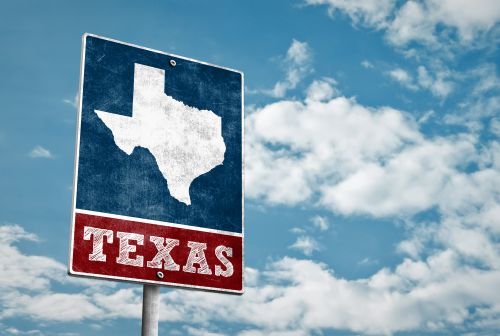 Texas: Industrial Chemicals in Tap Water
Texas: Industrial Chemicals in Tap Water
Texas often tops the charts for poor tap water quality. The state’s rapid population growth, combined with aging infrastructure and high levels of industrial pollution, has left many communities with unsafe tap water.
Reports from the Environmental Working Group show excessive levels of arsenic, radioactive contaminants, and even byproducts of disinfection chemicals in many municipal water sources. Rural communities in West Texas are particularly affected, where even natural water sources are often affected by high levels of bacteria and nitrates from agricultural runoff.
What You Can Do
Install cutting-edge water filtration systems in your home. Activated carbon filters are good for removing chlorine byproducts and some pesticides. A tap water filtration system that uses reverse osmosis is best for arsenic, nitrates, and many industrial contaminants.
If you’re concerned about biological contamination in your tap or well, you should boil all water before drinking or storing. This is the most effective method against bacteria and parasites but won’t remove chemicals.
Pro Tip: Make sure to include portable water filter straws in your stockpile. This will be a must-have water purification system if power and plumbing fail.
When tap water carries arsenic and bacteria, you’re not just risking thirst—you’re gambling with your family’s health. FEMA and hospitals won’t be there when contaminated water triggers sickness. That’s why every prepper needs a plan for medical self-reliance.
The Home Doctor is exactly that. Written by real physicians, it gives you step-by-step instructions to handle infections, dehydration, and gut problems when the ER is a fantasy.
Here’s what you’ll learn:
- How to treat waterborne illness when antibiotics run out.
- The exact signs dehydration turns deadly—and what to do fast.
- DIY remedies you can make with household items.
Stockpiles can’t save you if you don’t know how to treat the fallout. Get The Home Doctor and make sure bad water doesn’t kill your survival plan.
 California: Nitrate Runoff & Fire Contamination in Tap Water
California: Nitrate Runoff & Fire Contamination in Tap Water
Ironically, California has some of the strictest environmental laws in the U.S., yet it also has some of the worst water. This is particularly true in rural California and the Central Valley, where agricultural runoff has left high levels of nitrates in municipal tap water.
California’s frequent drought makes the issue worse, as shrinking water supplies effectively concentrate contaminants. Then, wildfire ash and chemicals often leach into municipal water reservoirs, further reducing water quality.
What You Can Do
In-home reverse osmosis water filtration systems are very effective at removing nitrates. A system that uses activated charcoal further helps catch many other water-borne contaminants.
If you’re sourcing water from natural sources, like rain barrels or a well, decanting and distilling is a slow process. Yet it’s reasonably effective at concentrating clean water while settling out contaminants.
Pro Tip: It’s best to draw water for storage in the early winter or late spring when the wildfire risks and agricultural contamination are at their lowest. Summer and early fall are the worst times to draw tap water or natural water for long-term storage.
Even if you filter your water, the damage doesn’t stop at the tap. Contaminants, stress, and toxins hit your gut first—weakening your ability to absorb nutrients, fight infections, and stay energized. In survival mode, that’s not an inconvenience—that’s a death sentence.
Nicole’s Balanced Gut Blend Tincture was made for this fight. Natural herbs work to calm inflammation, rebuild gut balance, and strengthen digestion when food and water aren’t clean.
Think about it: if your gut collapses, so does your entire survival system.
Add Balanced Gut Blend to your prep shelf at a special discount
It’s medicine that keeps your body absorbing every calorie you fight to put on the table.
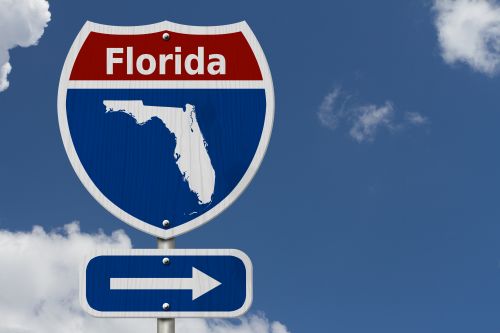 Florida: Radium & Disinfectant Byproducts in Tap Water
Florida: Radium & Disinfectant Byproducts in Tap Water
Florida’s tap water problems stem from its geology (lots of limestone aquifers) and its reliance on aggressive disinfection processes. That combination leads to elevated levels of radium, radioactive contaminants, and byproducts of chlorine-based disinfectants. Some communities also struggle with bacterial outbreaks after hurricanes damage water systems.
The bigger problem? Florida’s water grid is fragile. One major storm, one cracked aquifer, and suddenly millions are boiling cloudy water or lining up for rationed bottles. You can’t count on FEMA trucks arriving on time. Just look at the aftermath of Hurricane Michael or Ian—people went weeks with unsafe water. That’s not “modern America.” That’s third-world conditions in your own backyard.
And let’s not forget the long-term effects. Even when the water looks “clear,” exposure to radioactive particles and chlorine byproducts builds up silently over years. Cancer, thyroid problems, immune issues—it doesn’t strike overnight, but it strikes hard. That’s why relying on “safe enough” municipal water in Florida is like playing Russian roulette with your health.
What You Can Do
A home water filtration system with granular activated carbon filters will help remove chlorine byproducts. A system that uses reverse osmosis and remineralization also helps take out radium and heavy metals, then restores safe minerals.
Pro Tip: If you live in Florida, it’s always wise to stockpile bottled water. Especially in hurricane-prone areas, where you should always keep a survival stash.
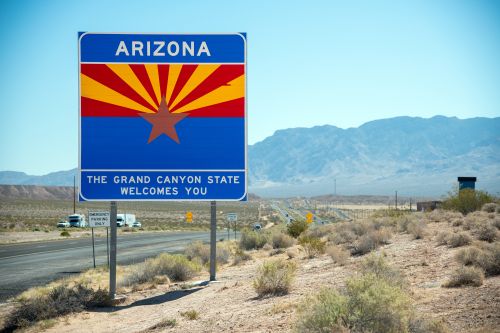 Arizona: Arsenic & Uranium in Groundwater
Arizona: Arsenic & Uranium in Groundwater
Arizona is one of the driest states, and much of its water comes from aquifers that have, unfortunately, been contaminated with naturally occurring arsenic and uranium. Mining activities in the 20th Century also worsened the situation, allowing uranium particulate matter into surface water sources that have started to leach into the municipal reservoirs.
While major cities like Phoenix treat water extensively, rural wells and properties that draw water from natural sources are far riskier. Long-term exposure to arsenic has been linked to skin disorders and cancer, making this a serious concern.
What You Can Do
The first step in dealing with Arizona’s sketchy tap water is to install a home water filtration system that uses reverse osmosis and ion exchange technology. The RO does a good job of removing arsenic and catches some uranium. An ion exchange system is further useful for removing uranium.
Pro Tip: I would also recommend having gravity-fed ceramic water filters in your preparedness supplies. While slow, they’re a good emergency option for purifying Arizona’s contaminated tap water in the event of a grid failure.
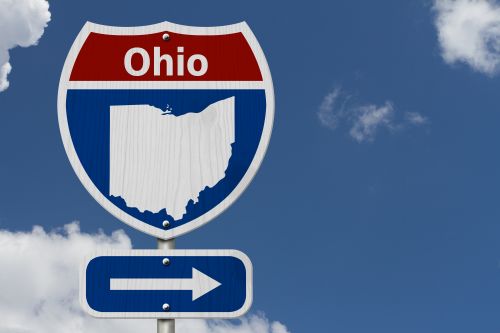 Ohio: Industrial Chemicals & Algal Blooms in Tap Water
Ohio: Industrial Chemicals & Algal Blooms in Tap Water
Ohio made headlines with the 2014 Toledo water crisis when toxic algal blooms from Lake Erie contaminated the supply. The state is also home to many industrial sites that have left behind legacy pollutants and “Forever Chemicals,” and VOCs. There’s further water contamination in rural areas from nitrates left behind from farming.
What You Can Do
If you live in Ohio, you can help purify the contaminated tap water by using UV sterilizers which are great against biological threats like algae toxins. Installing activated carbon filters in your home’s water system is also useful for reducing VOCs.
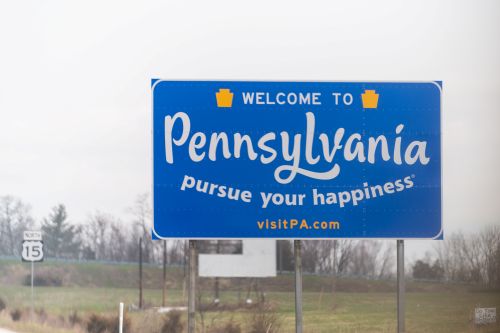 Pennsylvania: Lead & Fracking Contamination in Municipal Water
Pennsylvania: Lead & Fracking Contamination in Municipal Water
Older cities in Pennsylvania, like Philadelphia, Erie, and Pittsburgh, struggle with lead leaching from outdated pipes. Rural areas face another threat to their water supplies from hydraulic “Fracking” chemicals seeping into groundwater.
Residents report foul-smelling tap water, methane bubbles, and strange tastes in their tap water. If you notice any of these things, you should consider your tap water unsafe for human consumption.
What You Can Do
If you live in an area of Pennsylvania where tap water contamination is a concern, using NSF-certified lead filters is a must. This will trap lead and any other trace heavy metals that might be suspended in the tap water.
A reverse osmosis filtration system is also a good idea in mining areas. It helps remove many fracking-related chemicals.
Pennsylvania knows the cost of poisoned wells and toxic tap water. But here’s the truth: before modern plumbing, families didn’t wait for a clean water “fix.” They relied on generations of self-sufficient methods that worked without pipes, grids, or federal help.
That’s what The Amish Ways reveals—practical, old-world solutions that keep you alive when modern systems fail.
Inside you’ll find:
- Proven water and food independence methods.
- Food preservation without refrigeration.
- Remedies and skills modern America has forgotten.
Don’t bet your health on contaminated taps.
Learn the Amish Ways and regain the skills that carried families through centuries of hardship.
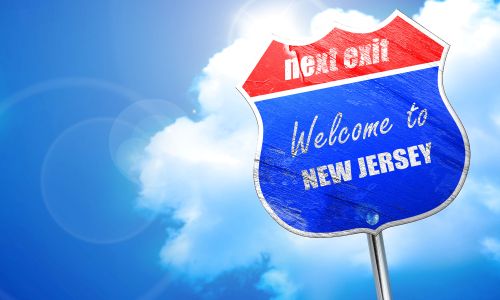 New Jersey: PFAS Forever Chemicals in Tap Water
New Jersey: PFAS Forever Chemicals in Tap Water
New Jersey has some of the highest recorded levels of PFAS (per- and polyfluoroalkyl substances) in its drinking water. These so-called “Forever Chemicals” are industrial compounds linked to cancer and immune issues, and they don’t naturally break down.
You can find PFAS chemicals just about anywhere in New Jersey. However, communities in the old industrial corridors along the Passaic and Delaware Rivers tend to have the worst tap water in the state.
What You Can Do
If you live in New Jersey and you’re worried about the quality of your tap water, you should install a filtration system with activated carbon AND reverse osmosis. This is the most effective household setup against PFAS.
Pro Tip: Store water for your stockpile in BPA-free containers away from urban runoff. This will further reduce the chemical load suspended in your long-term water stores.
If “Forever Chemicals” don’t break down in water, what makes you think the economy won’t collapse under the same weight? New Jersey’s poisoned taps are proof: government fixes are temporary, while the damage is permanent.
When the dollar cracks under inflation, what you hold won’t matter—unless it’s the stuff people are willing to trade for their lives. Dollar Apocalypse shows you what those things are.
- 27 survival items that instantly become currency when money dies.
- How to spot collapse red flags before the shelves empty.
- The barter secrets FEMA will never teach you.
Bad water is one crisis. A dead dollar is the bigger one. Grab Dollar Apocalypse now and learn what really buys survival when the system breaks.
 Washington: Nitrates & Agricultural Runoff in Well Water
Washington: Nitrates & Agricultural Runoff in Well Water
While Washington state is known for rain, its agricultural valleys are contaminated by nitrates and pesticides left behind by heavy farming. Eastern Washington, in particular, has serious well-water contamination issues. To the point that some rural residents depend on bottled water deliveries because their tap water isn’t safe for children.
What You Can Do
If you live in rural Washington, your home should have a reverse osmosis water filtration system. This works best for removing harmful nitrates. If possible, subscribe to a bottled water delivery system to provide purified water for small children who are particularly sensitive to nitrates in tap water.
Filtering water is one thing. But what happens when the pumps shut down because the grid fails? When power goes dark, water stops moving—and your taps stay dry.
That’s why No Grid Projects is a survival essential. It’s a collection of simple, DIY blueprints that give you independence from the grid. Power, heat, water—without waiting for utility companies to come crawling back online.
With these projects you can:
- Build low-cost off-grid power sources.
- Create DIY water systems that run without electricity.
- Turn any property into a fortress of resilience.
Water without power is a pipe dream. Get No Grid Projects and make sure your survival doesn’t depend on a dead grid.
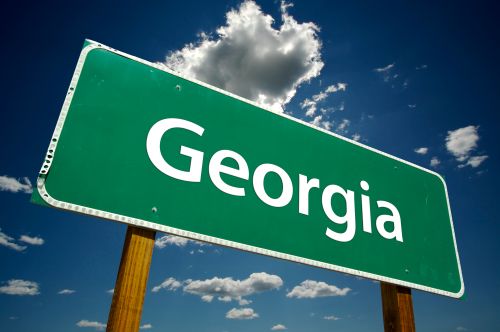 Georgia: Industrial Pollution & Chlorine Residue in Municipal Water
Georgia: Industrial Pollution & Chlorine Residue in Municipal Water
Georgia’s tap water issues come from both agricultural runoff and industrial discharge. It’s especially problematic near Atlanta. To compensate, utilities sometimes overuse chlorine-based disinfectants, which can create harmful byproducts.
What You Can Do
If you live in Georgia and you’re concerned about the purity of your tap water, using high-quality carbon block filters will help reduce chlorine byproducts. A home water system with activated charcoal and reverse osmosis features is also wise.
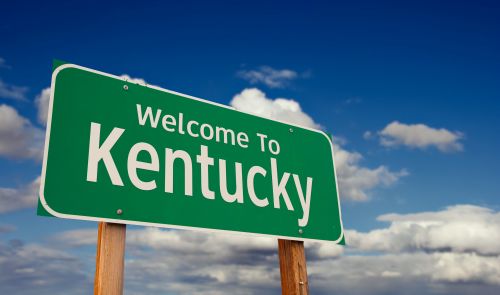 Kentucky: Lead Pipes and Coal Ash in Tap Water
Kentucky: Lead Pipes and Coal Ash in Tap Water
Kentucky’s tap water struggles stem from coal mining byproducts leaching into natural water sources that are drawn to feed municipal systems. Coal ash can leach heavy metals like mercury and lead into waterways. Some older towns still use lead service lines, raising exposure risks for children.
What You Can Do
If you’re concerned about the tap water quality in your home, installing a reverse osmosis water filtration system with activated alumina is wise. It’s highly effective for removing fluoride, mercury, and lead.
Special Tools That Can Save Your Life
Being aware of how bad tap water is in your state is not enough. The best thing you can do is become independent. You need to find ways to reclaim water and even produce it. The families who prepare ahead don’t just survive—they dominate.
Atmospheric Water Generators
Here’s the truth: soldiers in the Middle East don’t sit around hoping for FEMA trucks because tap water is bad. They use battle-tested tech to pull clean water out of thin air—literally. Now, those same methods are available to you.
Your best options:
- The Smart Water Box – dead simple to assemble, cheap, portable, and perfect for bug-out bags.
- The Backpack-Sized Water Generator – a little more advanced, but pumps out serious gallons when you need it.
Both systems are proven, affordable, and ridiculously effective. They don’t need rivers, wells, or government handouts. Just air.
Complex Water Generators
Want something permanent? If your goal is to make your home a fortress, portability won’t cut it. You need a steady, off-grid water supply that keeps flowing when the grid collapses. The Water Freedom System Is exactly that.
It’s built on a straightforward design using parts you probably already own. Cheap, tough, and endlessly reliable—it turns your house into its own water plant. Read how it works here.
Rainwater Harvesting Systems
Rain is free. Gutters + barrels = hundreds of gallons per storm. Add a decent filter, and you’ve just built a renewable supply that even the above-mentioned FEMA wishes it could deliver.
Final Thoughts on States with Bad Tap Water
If you live in one of these ten states with the worst tap water, don’t panic, but also don’t ignore the risks either. Even if municipal water systems are “technically” safe by EPA standards, they don’t account for cumulative exposure to multiple contaminants. Having reliable ways to filter and purify your tap water ensures that your water stores will be clean enough to support you when disaster strikes.
You may also like:
This Man Was Nearly Killed In Front Of His Home… For Water! (Video)

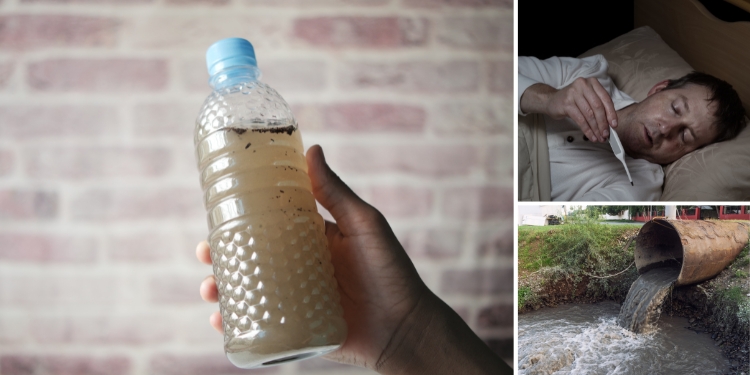

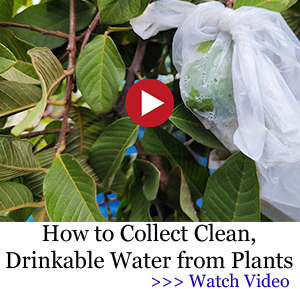








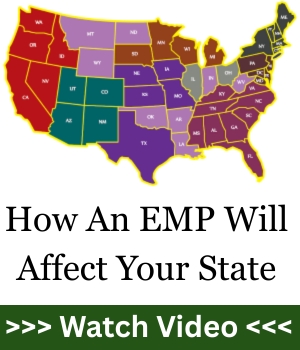

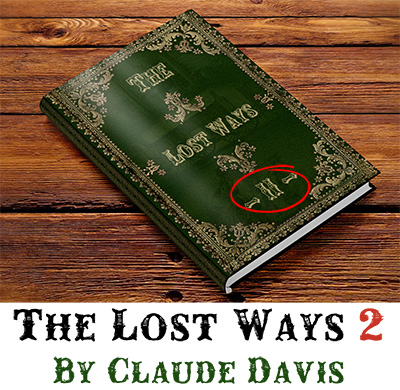
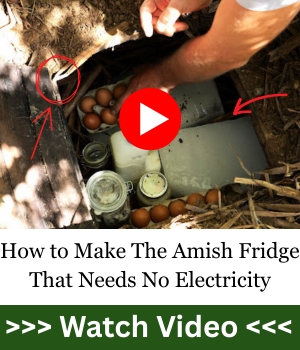
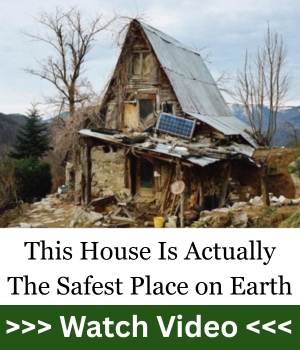


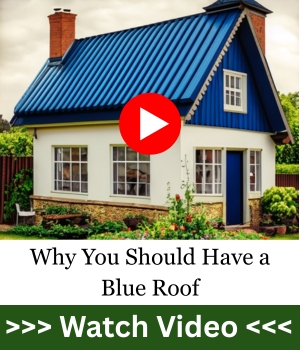




Boy do I ever remember, the tap water.
It came from a rubber green water hose and it did not matter if you lived there or not, the hose was fare game growing up.
The taste, was it bad or did it not matter just like all the other things that did not matter while you were growing up as a kid.
Running bare foot down the street or road. Not a big deal. Chasing down a skunk and your buddy got sprayed. lol…
But the best tap water was from a green sun faded rubber hose that tasted just like a hose.
Fast-forward to today, I drink and only use well water that I get at work. Town tap water is toxic, they use to send out notice, but that stoped. Guess it easer to lie than tell the truth.
There is still good water around, just getting it, is a job.
Trust is #1.
stay sharp
Yep, many of us remember this!
I can not believe that SD is not on this list???!!! The water here is sooooo hard and taste sooooo awful! It stains the clothes, my white washed clothes turn gray, and stains my granite sink, and is hard to get it out!!! I see it because my sink is black! I bet I clean it out 40 times a day! I am NOT kidding really!!!! I use a water filler for drinking, and cooking, and my shower has one on too!! I wish I could afford to have one for the entire house!!! I have been using one since Aqua Tru came out. It use to be a really good filter now not so much since the illuminti took control!!!!!! The price for it has gone way up to over $400.00s! And now you have to buy so many other things to keep it working, when before they had all that on the filter! And the one I bought a couple years ago for over $400.00s does not work anymore! I am so glad I kept the original one! I only reason I bought the new one is I wanted it for my bathroom up stairs. And the 3 filters for it cost $100.00s, and do NOT last as long as the originals did!!! I do this because the water here is that bad!!! And they just raised the water bill another $10.00s!!! WOW!! Good times!!
Does anyone use Berkey Water Systems and have had their water tested?
I have a Berkey but I keep it for when things go south. I do trust it will do the filtration that their advertising claims. The ceramic element is a proven method of catching small particulates and bacteria, then the activated carbon will catch some organics. In general I would rate treatment levels as filtration, ion exchange, reverse osmosis, distillation. Each one of us has to analyze our drinking water and decide the level we need personally. I am where the plains meet the front range of the rocky mountains so we have access to “pure rocky mountain spring water” (does that ring a bell with any beer drinkers).
The other thing I have noticed is that not one response said thanks for telling me I had bad water, if you have bad tasting water you know it. But you can be drinking high lead levels, or high nitrate levels and not know it.Realize that a Berkey isn’t going to help you with either of these. Best to have your tap water tested and then decide on additional treatment if any that you feel you need. If you are on a public water supply the EPA is basically telling you it won’t kill you right away, but not that is the best for you over a whole lifetime.
I also acknowledge that I would use a lower quality ( but bacterially safe) water after a SHTF situation if that is what is available.
Howdy from high in the desert swamp,
There were leaking salt dome caverns years back which leached into the wells. It was awful. Benzene and the strategic oil reserve. The county in this area went back to wells instead of the river. Hard water and the chemicals to purify smell bad. I bought an alexapure. First I made one from two big red buckets with the hardware store in BIG YELLOW LETTERS. It worked just fine. When people were going to come visit I was told get the stainless one. It was on sale and came with an extra filter. The filters do 250-300 gallons. I found I could extend the gallons a lot. A lot. I took it out and scrubbed it with steel wool under running water. I managed to get a crust off of municipal water munge. Good thing about the system is I can take it with me if I camp or road trip. Ceramic filters are the way to go and if the SF fellas use them? They are good. I have filtered rain water caught in a five gallon bucket. I caught water from a fire hydrant. Poured it through a flannel shirt and filtered it. I was thinking before reading this article of filtering some retention pond water. Alligators and wildlife thrive in it, on it or under it. Filter and boil or boil then filter? I have boiled it and made rice and rabbit a couple years ago while out testing my pvc bow. It didn’t affect me. Boil and filter would be the best. You can buy more expensive setups but lab tests say alexapure are the gold standard. I clean the two stainless tubs and the filter once a month. It extends the filter life.
I and others on here have written clean water will be worth killing you for. If you don’t have to go out on water runs often you may keep yourself safer and have pure water.
Remember the Alamo
Remember 9/11
Remember North Carolina
Remember to have your soul prepared
Suggestion: Purchase a GOOD DIY water test kit to first understand if you have a water concern, then decide what course of action you should take!!
I live in OH but I get my water from an artesian spring. OH law requires filtering and it runs thru reverse osmosis. I still filter again because you never know. It is so good. I can no longer drink tap or bottled water because the “good water” [our family name for it] spoiled us. It costs…are you ready…25 cents a gallon. I make regular runs to keep 15 gallons on hand at all times and rotate it to keep the supply reliable. Even the pets now have the good water (I will need that dog I suspect). The company even sells 3 gallon/algae growth resistant, non-whatever bad plastic is called containers for around $3-$5.
I remember growing up in the sierra nevada mountains of Ca before Democrats
Greatest Water , Great Taste, Always good
Then Grew up , went to military and boy found out what bad water tasted like
usually cold made it palatable an could drink when thirsty
The Times changes everything and demo crat rule ruins everything
Water is not drinkable and so we use filter s on everything, and still told its bad
you think they the politicians would get a clue
never in your wildest dreams
only MONEY is what they all want , just more money
The love of money , root of evil and the substance that destroys the heart of man
lust, greed, and liennest to the soul
This is what has happened to them , corrupt, like judas iscariat , trader s for money and wealth .
After reading this article, I feel truly blessed to live in an area where there is an abundance of clean and safe tap water.
Maybe . . .
No state has ONE source for all Municiple water, your state may not be on the list, but your town might be the worst ever. even if you spend 1 M $ to test it, doesn’t mean its still the same, next week.
Nope. I’m good. I know other areas of the state are not so lucky, but I do know exactly where my water comes from, how it’s handled, treated, monitored and how it is delivered. I also receive periodic water quality reports and if I have any problems or suspect any issues, I know who to call. It is then quickly and thoroughly tested and if necessary investigated.
All that said, I do prepare for temporary disruption like a burst pipe which might lead to an interruption in service although that has not happened in the last twenty or so years when service was suspended for 24 hours to replace an aging pipe. I came home to find a note posted on my front door alerting me in advance of the pending work so I could take steps to prepare.
Spoiled living here, the ready availability of fresh water, plentiful and clean is the first thing I would look at should I ever decide to pull up stakes.